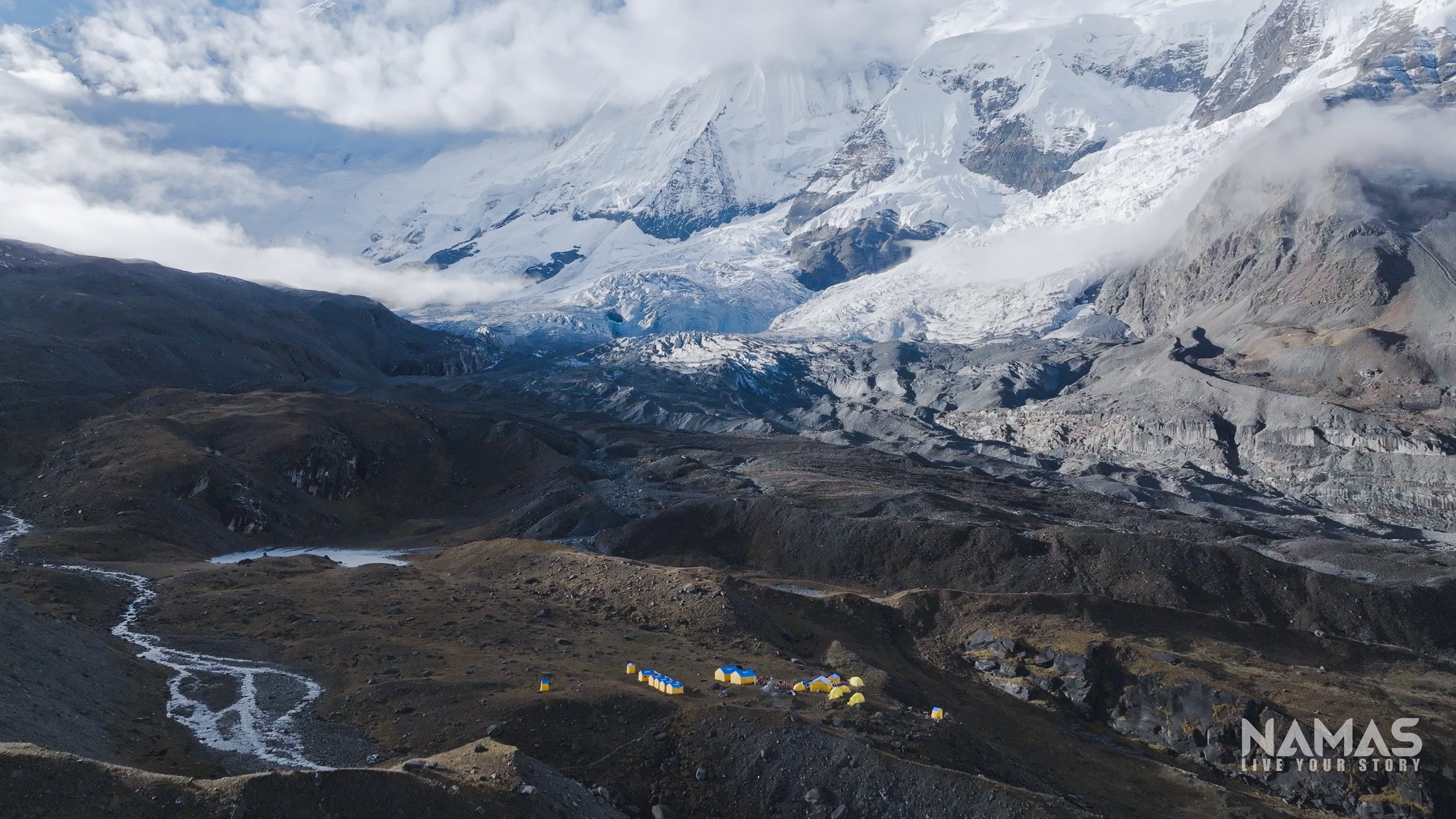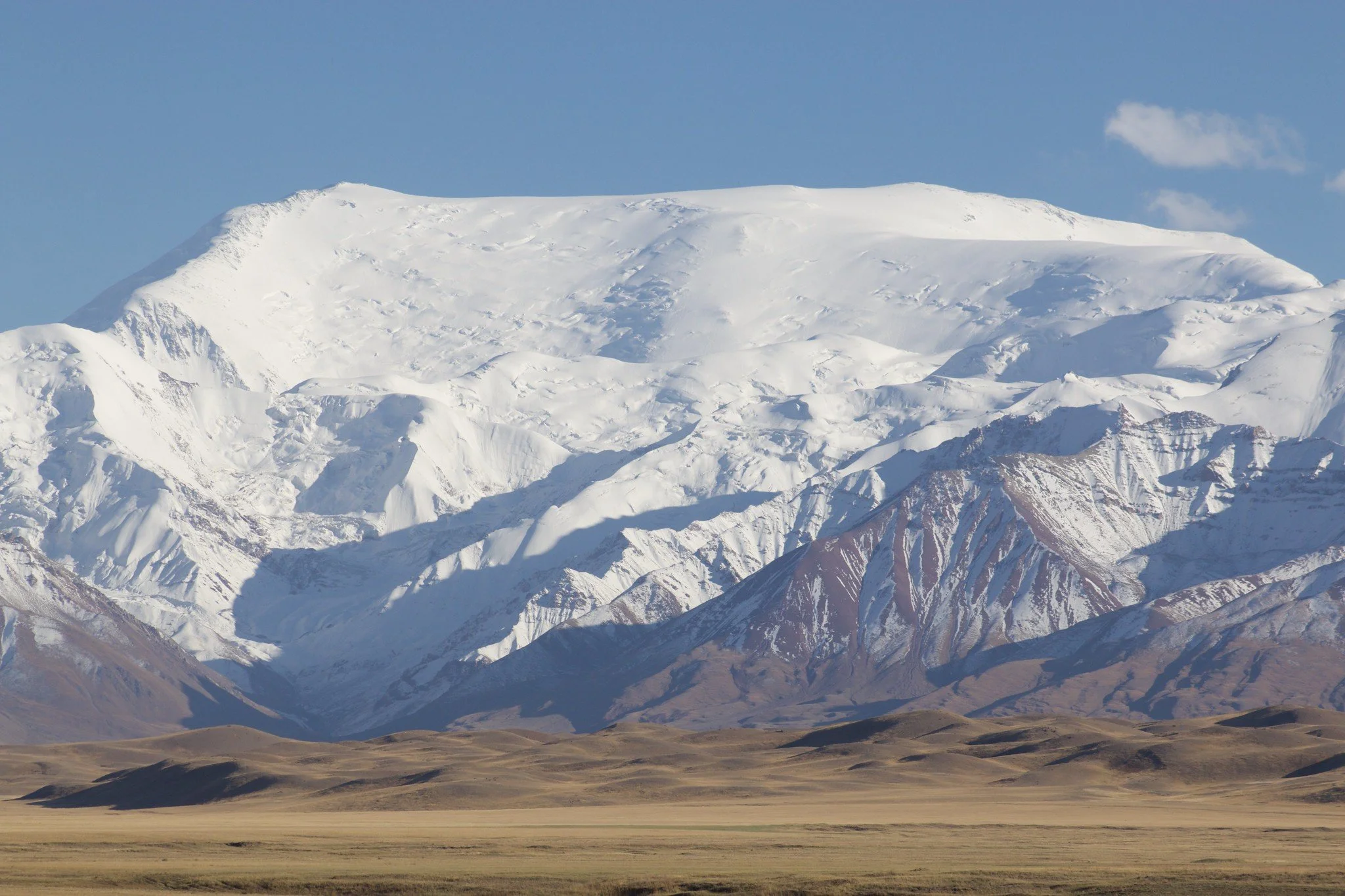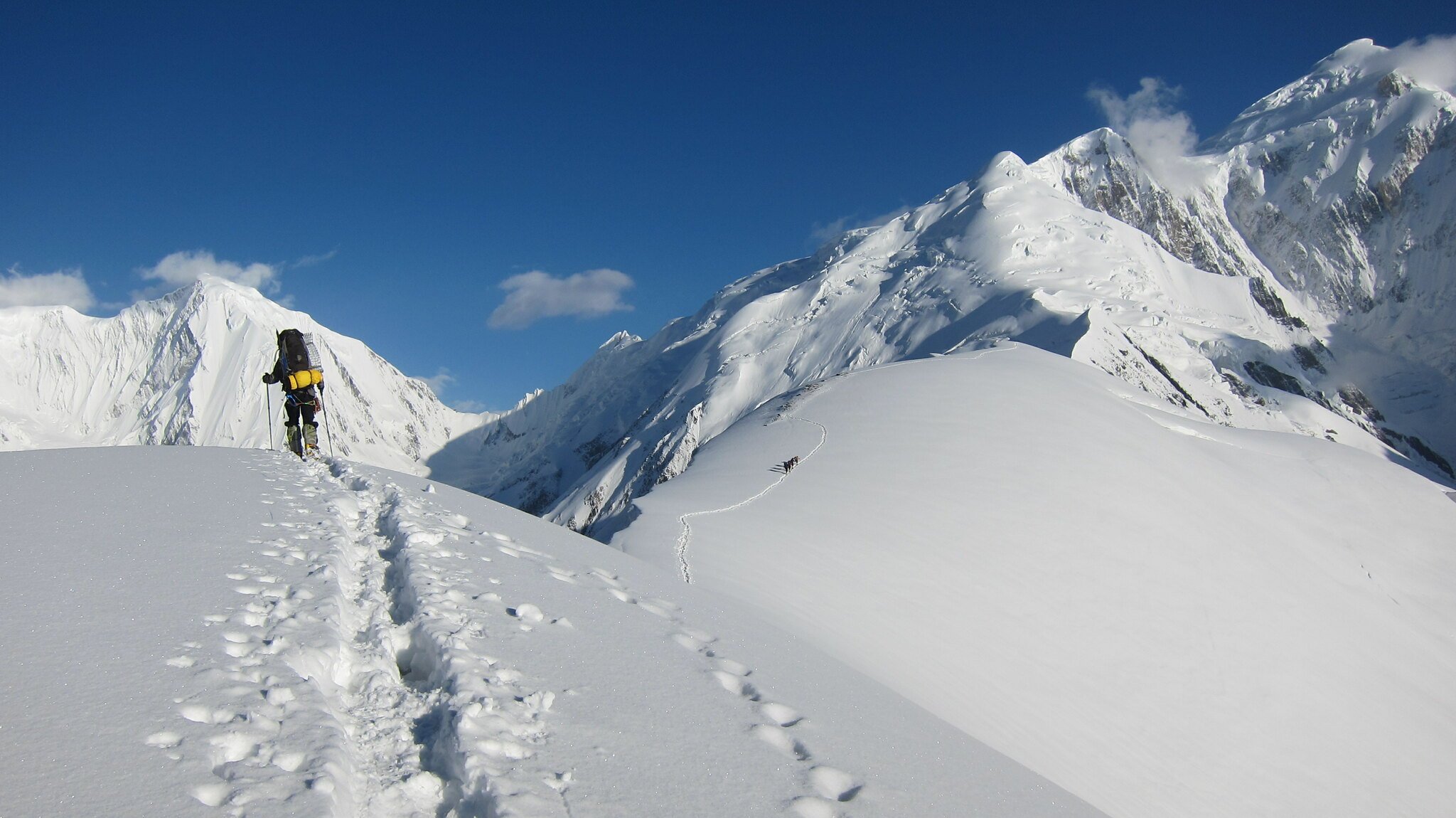Comparing 7000M Peaks: Which One is Right for Your Next Expedition?
Annapurna IV 7525M summit seen in the middle with Annapurna 2 on the left.
Perhaps you have completed several 4,000m to 6,000m summit expeditions and are now seeking a greater challenge. You might be exploring 7,000m mountains to enhance your high-altitude mountaineering experience, with aspirations of climbing Everest or one of the other 8,000m peaks. Alternatively, you may simply wish to immerse yourself in the pure exploration and remoteness that these high-altitude adventures offer.
Unsure on which 7000M peak to choose? In this blog post, we compare five prominent 7,000m mountain expeditions—Annapurna IV 7525M, Baruntse 7129M, Tilicho Peak 7134M, Himlung Himal 7126M, and Lenin Peak 7134M—to help you make an informed decision for your high-altitude journey.
1. Annapurna IV (7,525m)
Location: Annapurna Range, Nepal
Level: Advanced level
Technical Difficulty: High
Best Time to Climb: Spring (April-May) and Autumn (September-October)
Duration: 30 days
Key Features: Annapurna IV is a remote and lesser-climbed peak in the Annapurna range, known for its technical challenges. Climbers must have advanced skills in rock and ice climbing, as the route includes steep sections, exposed ridges, and deep snow. The peak's isolation offers a more immersive and adventurous experience, but it also demands excellent logistical planning. With only about 150 people ever reaching the summit, Annapurna IV is ideal for seasoned mountaineers seeking a quieter climb.
P.s. - Annapurna IV can be your expedition to prepare for Everest, Annapurna 1 or K2 expeditions.
Pros: Quieter, remote, and ideal as preparation for Everest or technical 8000m peaks.
Cons: Avalanche risk, technical sections, and steep terrain make it unsuitable for beginners.
2. Baruntse (7,129m)
Location: Barun Region, Nepal
Level: Intermedaite level
Technical Difficulty: Moderate to High
Best Time to Climb: Autumn (October-November)
Duration: 24 days
Key Features: Baruntse sits between the Everest and Makalu ranges, offering breathtaking views of both. It is popular among climbers preparing for lower 8000m peaks like Manaslu 8163M or Cho Oyu 8201M. The ascent becomes more technical after 6900m, particularly along the exposed summit ridge, which requires climbers to stay focused under challenging conditions. It’s a solid test for intermediate climbers who are ready for more demanding expeditions.
Pros: A great option for climbers seeking a moderate technical challenge before moving to 8000m peaks.
Cons: Exposed summit ridge demands advanced skills and leaves little room for error.
3. Tilicho Peak (7,134m)
Location: Annapurna Range, Nepal
Level: Intermedaite level
Technical Difficulty: High
Best Time to Climb: Spring (April-May) and Autumn (October-November)
Duration: 25-30 days
Key Features: Tilicho Peak offers a dramatic climb above Tilicho Lake, the highest lake in the world at 4900m. Though less famous than other Annapurna peaks, Tilicho is a technically demanding climb with steep rock scrambling, snow, and ice conditions at higher altitudes. This peak is for experienced climbers who have strong mountaineering skills and the endurance to navigate long, steep sections. Due to its remoteness, logistical planning is crucial, and only experienced teams should attempt this climb.
Pros: Stunning, remote, and less crowded with incredible views.
Cons: Requires advanced technical skills and careful planning due to the isolation.
4. Himlung Himal (7,126m)
Location: Manaslu Region, Nepal
Level: Entry level
Technical Difficulty: Moderate
Best Time to Climb: Autumn (September-October)
Duration: 25-30 days
Key Features: Himlung Himal offers a more moderate challenge, making it an excellent choice for climbers looking for an introduction to 7000m expeditions. The route to the summit is non-technical, consisting mainly of steady snow slopes and moderate crevasses. It’s a great option for those with limited experience who want to test themselves at high altitudes without the intense technical demands of other peaks.
Pros: Suitable for less experienced climbers with a straightforward route.
Cons: May not appeal to those seeking a more rugged, technical challenge.
5. Lenin Peak (7,134m)
Location: Pamirs, Kyrgyzstan/Tajikistan
Level: Entry level
Technical Difficulty: Moderate
Best Time to Climb: Summer (July-August)
Duration: 21-24 days
Key Features: Lenin Peak is one of the most accessible 7000m peaks, attracting many first-time high-altitude climbers. Its long, glaciated slopes offer a relatively straightforward ascent with minimal technical sections, but the altitude is still a serious challenge. Climbers must be well-acclimatized to avoid altitude sickness, and the unpredictable weather—particularly strong winds—adds another layer of difficulty.
Pros: Ideal for beginners seeking a high-altitude challenge without intense technical demands.
Cons: Crowded during peak season, with risks associated with altitude and harsh weather.
Comparison Summary
Which Peak is Right for You?
For Advanced Climbers: If you're looking for a highly technical challenge, Annapurna IV and Tilicho Peak are your best options. These peaks offer steep routes with plenty of rock and ice climbing, perfect for climbers with significant experience and no interest in crowded routes.
For Intermediate Climbers: Baruntse provides a good balance between moderate and challenging sections, making it a solid choice for those with some technical skills who are preparing for lower 8000m peaks.
For Beginners: Himlung Himal and Lenin Peak are great for climbers who are new to 7000m expeditions and want to experience the challenge of high-altitude mountaineering without the intense technical difficulties of other peaks.
Choosing the right peak depends on your experience, skill level, and what you want to achieve. Whether you’re aiming for a quiet, immersive climb on Annapurna IV or looking for an accessible, non-technical adventure on Lenin Peak, there’s a 7000m peak out there for you.
For more details on these expeditions and to plan your next adventure, visit our 7000M expedition page.
NAMAS Adventure
Climbing your first 7000M mountain peaks. Safer, easiest and high success rate - Namas Adventure
What is the easiest 7000M peak to climb, especially for someone looking to transition from 6000M peaks before attempting an 8000M mountain? Which 7000M peak offers the highest success rate for climbers?
Climbing 7000M peaks can be a great way to gain valuable experience and improve your skills before tackling higher mountains. These peaks are often less crowded than their 8000M counterparts, such as 🏔Mount Everest, K2, Manaslu, G2 and Makalu, and provide a chance to test your abilities in a more remote setting. It is important to have a solid foundation of experience and proven climbing skills before attempting these peaks, and if you have any doubts about your readiness, it is recommended to discuss your experience level with a professional guide or expedition company.
For those interested in high-altitude mountaineering, it is important to note that there are no easy peaks to conquer. It is crucial to have previous experience climbing above 4000-6000 meters before attempting a 7000M peak. These expeditions will provide the necessary knowledge and understanding of what it takes to climb larger mountains, both physically and mentally. At the 7000-meter level, the difficulty and technicality increase significantly, so it is important to be well-prepared and able to handle the challenges that come with these expeditions.
To qualify for a 7000-meter peak expedition, it is recommended to have completed at least two climbs of 6000 meters or higher, such as Lobuche East, Island Peak, Chulu West, or Mont Blanc. These experiences will help you understand how your body and mind respond to high-altitude environments and allow you to reflect and optimize your training for future challenges.
If you are planning a 7000-meter mountain expedition, there are several entry-level options available that offer semi-technical or technical climbing routes and are considered safer without unreasonable dangers. These expeditions can be an excellent goal for intermediate to advanced-level climbers.
Himlung Himal 7126M, Nepal
Himlung Himal 7126M, will be our first recommendation when it comes to 7000M+ peak expedition. This peak has the highest summit success records to date and is considered the easy/safest 7000M expedition in Nepal.
Pre-requisite requirements (at least one or more): Kilimanjaro, Mt. Elbrus, Lobuche East & Island Peak, Chulu West, Khumbu 3 Peak expeditions, Aconcagua, Mt, Blanc. (Similar 4000M - 6000M peaks or higher)
This peak is a popular choice for intermediate climbers seeking a challenging yet accessible mountaineering experience in the Annapurna region, located near the border of Nepal and Tibet. The best time to tackle this mountain is during the late spring or autumn when climbing conditions are optimal and the size and support of other teams are favorable.
This expedition involves ascending through a series of 2-3 high camps, with no intermediate peaks for acclimatization. Climbers can expect plenty of snow on the mountain, which is known for its fresh powder. Despite its remote location, there may be a few other smaller teams and climbers present at base camp and along the route. If you are interested in tackling Himlung Himal, be sure to read more about this expedition."
Bonus article - Check our article on the success rate of Himlung Himal vs Baruntse. (link)
Lenin Peak is another 7000M peak that is considered an easy, accessible, and non-technical climb. This peak sits at the border between Kyrgyzstan and Tajikistan. The only factor that hinders a lot of the expeditions in this part of the climbing world, is the unstable and uncompromising weather patterns. Most commercial expeditions are planned during the summer season (June - August).
This expedition does attract a handful of crowds so, if you want expeditions with lesser crowds/teams then the above-mentioned expedition will be the better alternative.
Pre-requisite requirements (at least one or more): Lobuche East & Island Peak, Chulu West, Khumbu 3 Peak expeditions, Aconcagua (Similar semi-technical 6000M peaks or higher)
Putha Hiunchuli 7246M, Nepal
Putha Hiunchuli 7246M (Dhaulagiri VII) can be found in the far western isolated part of Nepal. Putha Hiunchuli is another 7000M peak suitable for intermediate/advanced level climbers, which is a semi-technical climb without unreasonable hazards of avalanches and fewer crevasses in the climbing route. This mountain is best climbed during the autumn season due to the more stable snow conditions. The expedition involves three high camps and long stretches between camps. Putha Hiunchuli is known for having fewer dangers and wide plateaus, making it a popular choice for advanced-level off-piste skiers and snowboarders. However, logistics and infrastructure development in this region can be challenging compared to other expeditions. If you are an intermediate to advanced-level climber looking for a unique mountaineering experience, Putha Hiunchuli may be the perfect fit for you.
This is another easy and safest 7000M peak to climb but the only issue is their logistics and having enough team members for the expedition. Learn more about the Putha Hiunchuli expedition.
Pre-requisite requirements (at least one or more): Lobuche East & Island Peak, Chulu West, Khumbu 3 Peak expeditions, Aconcagua (Similar semi-technical 6000M peaks or higher)
Spantik 7026M, is a popular choice for many climbers seeking a 7000M expedition in Pakistan. Also, famously named as Golden peak, Spantik is located in the Gilgit-Baltistan region. This peak expedition is accessible and can be a great 7000M introductory climbing during summer (June - August). This is another safer and semi-technical expedition to undertake, especially if you are planning your first 7000M expedition.
Pre-requisite requirements (at least one or more): Kilimanjaro, Mt. Elbrus, Lobuche East & Island Peak, Chulu West, Khumbu 3 Peak expeditions, Aconcagua, Mt, Blanc. (Similar 4000M - 6000M peaks or higher)
The journey to the base camp takes about 3 days of the trek. This expedition consists of 3 high camps with one or two rotations so that climbers are well acclimatized before making the push for the summit. From the summit, amazing views of the Hindu Kush and Karakoram ranges are seen with K2 and Broad peaks on sight.
Are you considering climbing your first 7000M peak as part of your mountaineering journey?
It is important to ensure that you have the necessary experience and preparation before attempting a climb of this magnitude. Inadequate preparation can not only jeopardize your own safety, but also that of your guides and team. Our team has a range of 7000M peak expeditions available in the Nepalese Himalayas and we are working on expanding our offerings to include summer expeditions in India and Pakistan in the future. Let us help you gain the necessary experience and skills to successfully reach the summit and continue on your mountaineering journey.
Go challenge greater things. Commit and finally take on that dream adventures you have always been planning. Life is too short to live with regrets. See you in the mountains. 🙂🏔🙏🏼
Namas Adventure Team
Live Your Story













